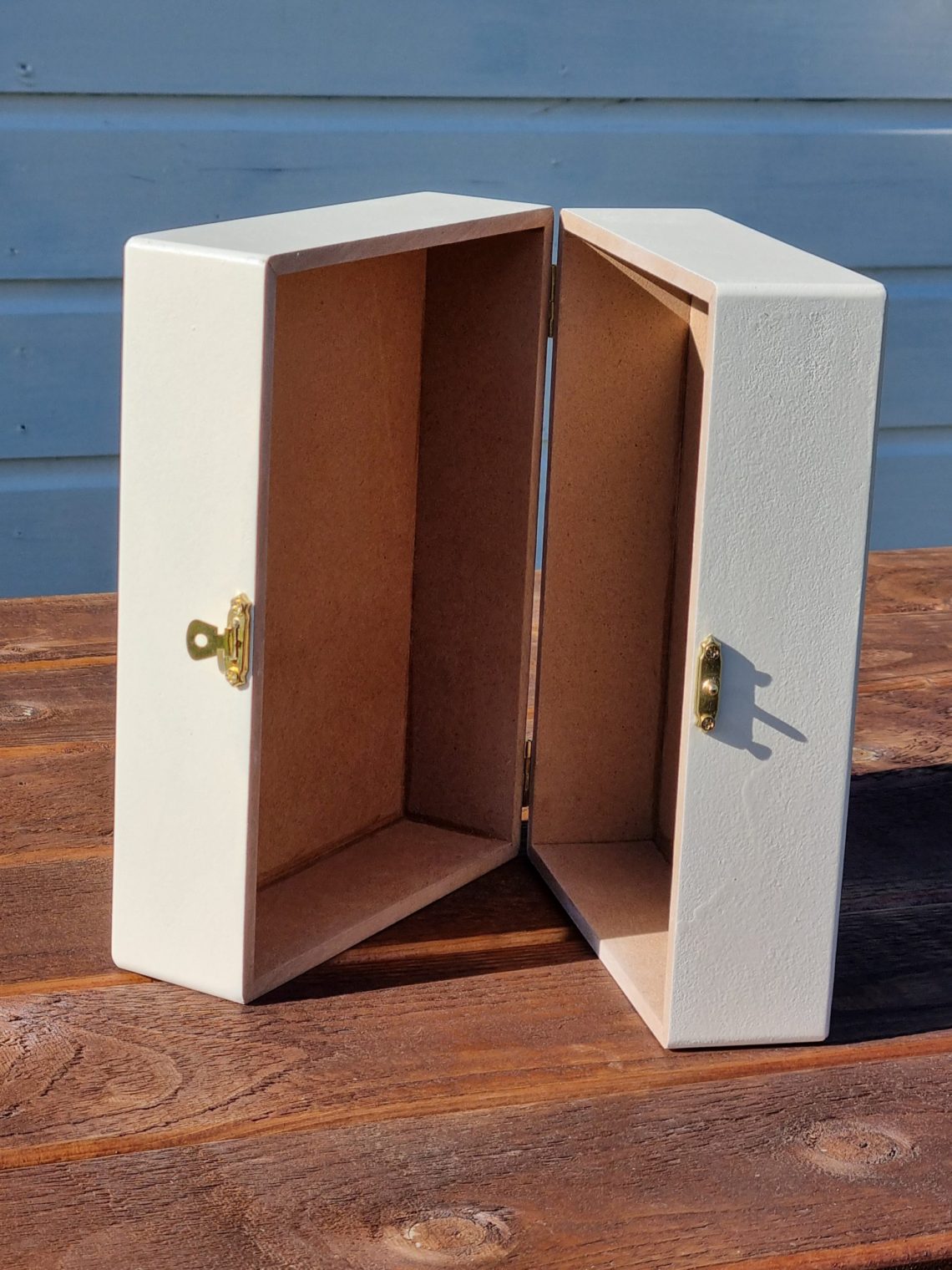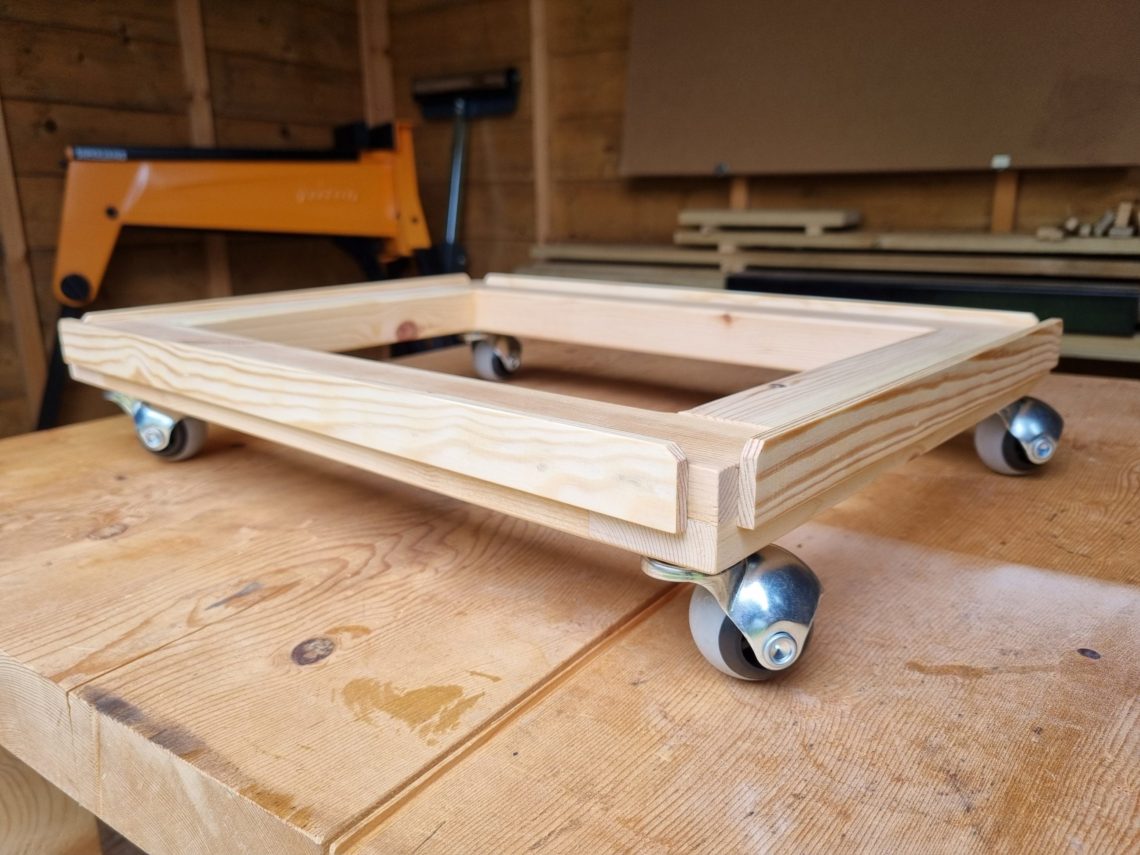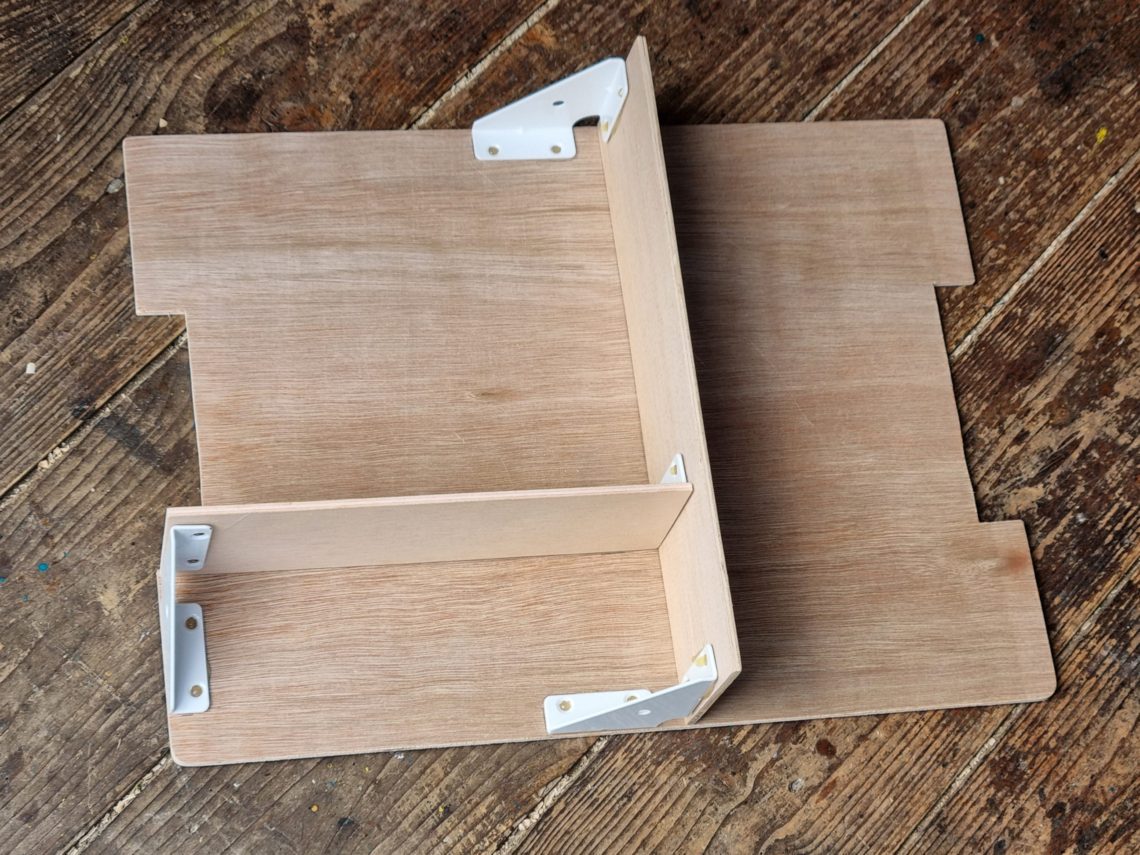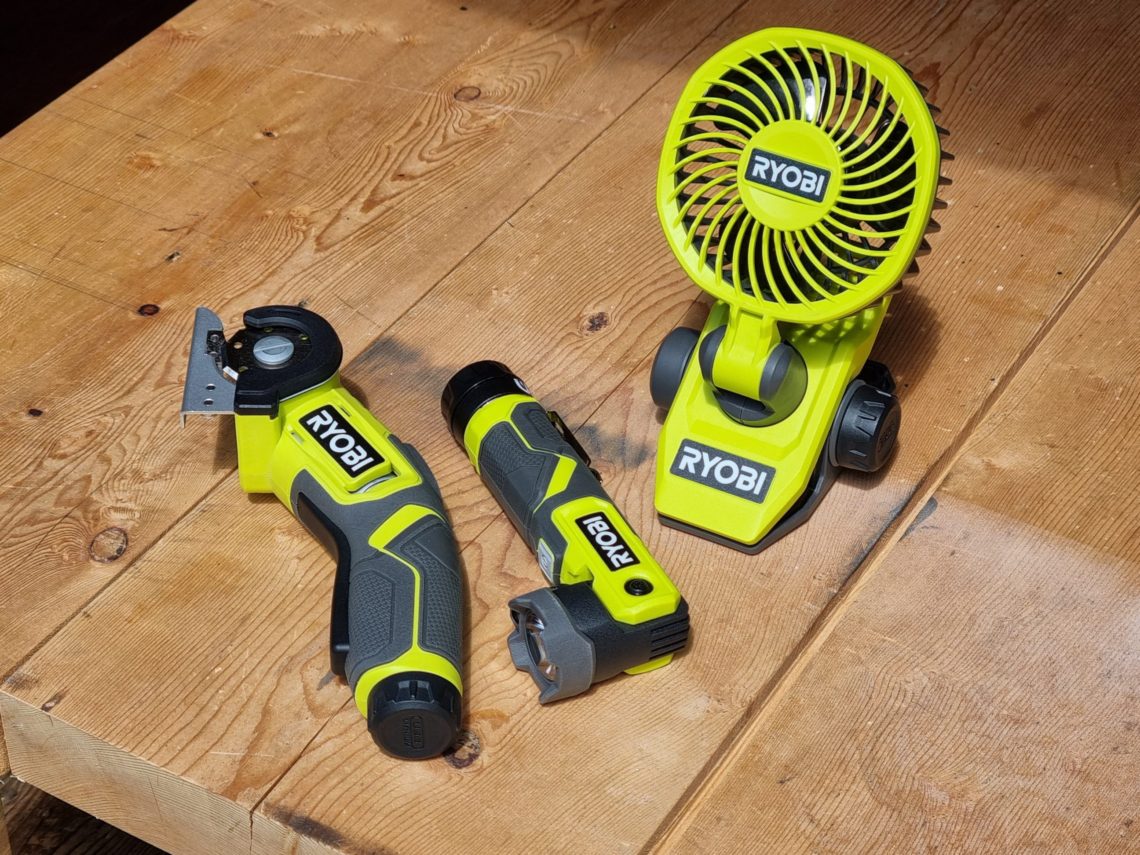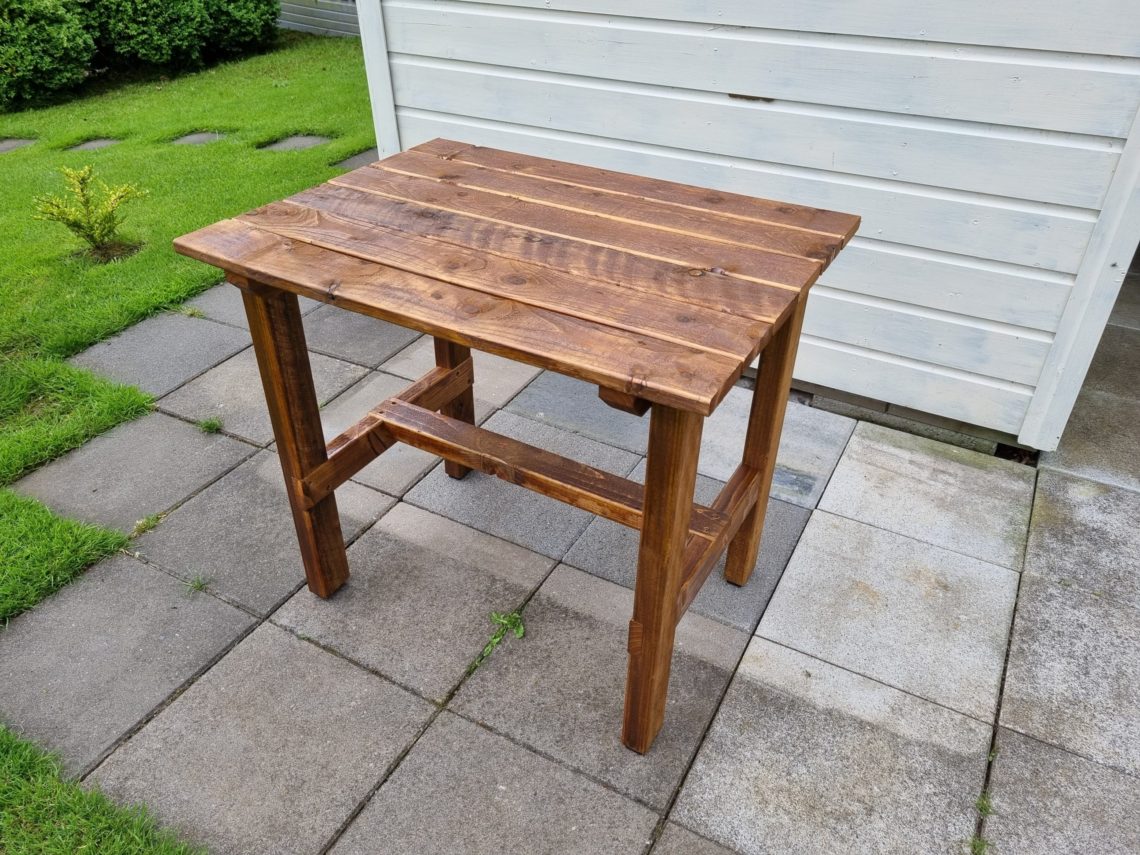-
MDF box build: When the router bit isn’t right
V-groove router bits are often praised as foolproof tools for cutting perfectly bevelled 45º edges. Intrigued by their simplicity and accuracy, I decided to put them to the test. I initially bought a sheet of MDF to create a few small part trays, but the project quickly evolved into two larger trays, which I then joined with hinges to form a box. Although this wasn’t my original plan, the idea of a box was more appealing, especially with gift-giving occasions approaching. My main concern wasn’t the touted precision of the bits, but rather how a V-groove bit with a flat…
-
Custom L-Boxx glide tray for streamlined tool access
Over the years, my collection of L-Boxxes and Bosch tools has steadily grown. Although storage itself wasn’t an issue, the process of retrieving the right tool became increasingly time-consuming. On top of that, the repetitive bending wasn’t doing my spine any favours – safety and health should always come first. After all, we need to take care of ourselves because no one else will. A basic tray on castors seemed like the perfect solution – simple to build and cost-effective. With most of the materials already on hand and all the necessary tools, I was able to start construction immediately.…
-
Outdoor planter made with pocket hole joinery
Pocket hole joinery seemed to be an ideal choice for that project, due to the absence of visible fasteners, the strength of the joints, and the simplicity of construction. My new planter had to match the colours with the bench and include several decorative (yet structural) reinforcements, as well as metal feet. The timber I purchased for that project was pressure-treated, 1x4s and 2×1-1/2s (since they didn’t have 2x2s in stock). The corner braces and the pan-head screws were stainless steel, and the adjustable feet were zinc coated. In a project like this, every detail counts as it is displayed…
-
2×4 cross-legged bench
The bench is made entirely from 2×4 treated timber, assembled with screws, except for the stretcher, which incorporates two threaded bars extending from one side to the other, securing both legs with nuts and washers. Although its design resembles a dining bench, its height is not suitable for table use. However, it is ideal for a patio, porch, or as a sunbathing seat. It provides a welcoming spot for someone to sit and greet returning loved ones with a smile. The durable finish in antique pine colour makes it an excellent addition for the front of my newly painted house.…
-
Greenish Skully and Bolo Wrymouth
Two brutally simple, engraved linden boards which were used to make a crate a few years ago. That wood, however, was prone to seasonal movements big time and the crate had to be disassembled. It just wasn’t the perfect material for a crate. Nothing was going to waste, though, that linden wood was perfect for carving and the chisels I had were super-sharp. No excuses, I had everything I needed, and I was ready for some dust-free woodwork, for a change. What began as a solitary wall decoration, soon evolved into a small collection of two whimsical carvings. The self-adhesive…
-
L-Boxx organiser
Bosch L-Boxxes theoretically provide an excellent storage solution for workshops or vans, they are durable, easily transportable, and can be stacked for storage. However, over time, one may realise that the storage space and volume of an L-Boxx can be used more efficiently. In fact, most L-Boxxes in my workshop are utilised in a manner far from efficient. The standard inserts usually hold only one or two tools, along with a charger and a battery, and perhaps have additional compartments for snugly fitting boxes and accessories. Although these inserts protect the contents during transport, they are not as effective for…
-
Father’s Day tools, edition 2024
Coincidentally, all the tools in this review are from Ryobi, a brand with a reputation that may vary based on the tests conducted and the reviewers. This brief review covers three tools powered by removable and USB rechargeable 4-volt batteries. These tools – or perhaps gadgets – have performed well, and I am satisfied with their performance. Surprisingly the cutter is the most used tool – not even in the workshop, but in the kitchen. Who would have thought? One of the batteries I use, which is not 2 Ah but 3 Ah, doubles as a power bank. I couldn’t…
-
Wooden patio table
In search of a suitable patio table for the upcoming warm season, I found no reasonably priced local options. My online hunt was also fruitless. However, this search wasn’t in vain – I discovered the most popular dimensions and standard sizes. With this knowledge, I checked my pressure-treated timber supply and, to my surprise, I had all the necessary materials for the base! That serendipity not only saved me money but also a trip to the timber store that day. It allowed me to indulge in my woodworking hobby in blissful solitude. Once my cut list was prepared, I used…
-
EVOO bottle into a shot glass
Not only is it healthy to implement extra virgin olive oil into your diet but that step also gives you free bottles, which usually are great for glass upcycling projects. I’ve made many interesting and useful containers out of oil bottles, among them there are flower vases, storage totes, drinking glasses and now shot glasses. This project was about upcycling an empty oil bottle and giving it a second life as a shot glass. Perfect for personal use and as a gift, also quite easy to make. The ideal size for serving vodkas and liqueurs. I started by removing the…
-
Large and thick Krupnik liqueur glass
Krupnik Old Liqueur ranks among my favourite liqueurs. Previously, I had repurposed an older version of the bottle it came in. Although they’ve updated its appearance, the flavour and recipe remained unchanged. The new bottle looked like an ideal project and I simply needed a new glass, especially something like that – slightly tapered towards the top, heavy and with thick walls. I couldn’t resist making one. Before scoring the line on the glass, I needed to change the cutting wheel. The jig I made was equipped with a head, simply snapped off from a glass cutter. Periodically, I rotate…
